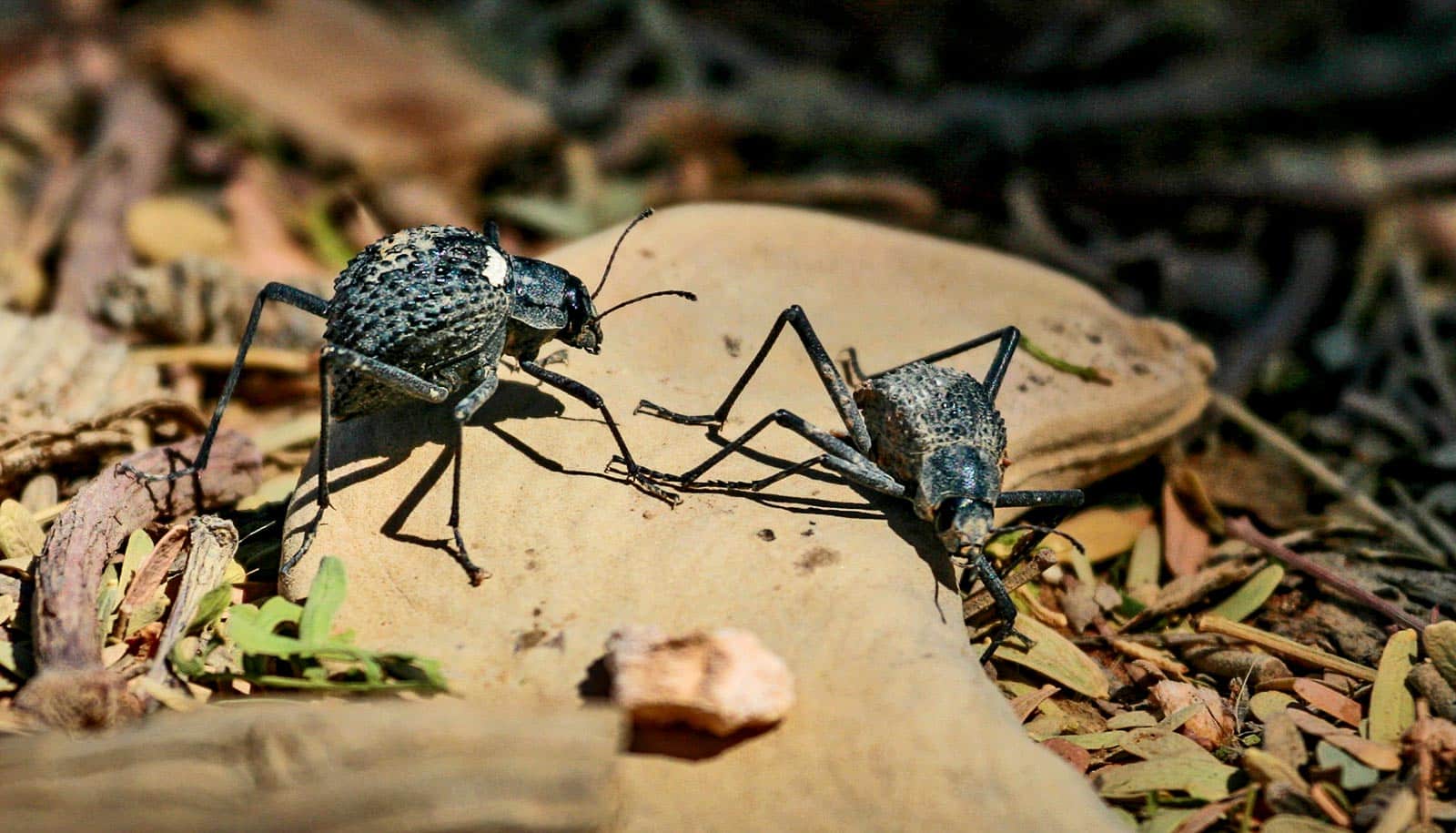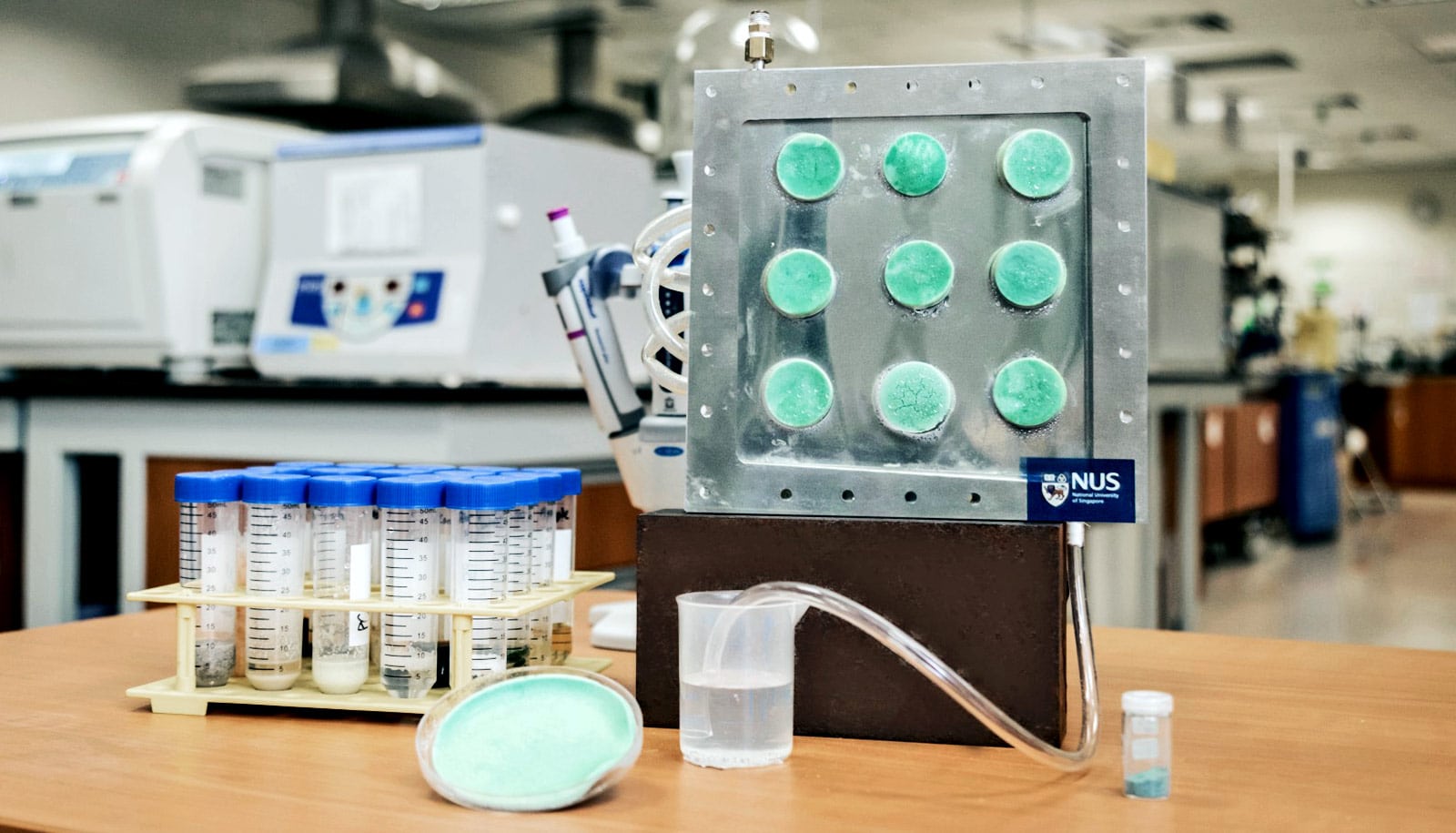A new vapor condenser consumes no electricity and—like the darkling beetle—lowers its temperature to harvest condensed water.
Access to clean water is a huge issue across the globe. Even in areas with water resources, a lack of infrastructure or reliable energy means purifying that water is sometimes extremely difficult.
That’s why a water vapor condenser could be revolutionary. Unlike other radiative vapor condensers that can only operate at night, the new design works in direct sunlight and requires no energy input.
“We have worked on solar-driven water evaporation technologies in the past years,” says Qiaoqiang Gan, professor of electrical engineering at the University at Buffalo and a leading corresponding author of a paper on the work. “We are now addressing the second half of the water cycle, condensation.”
“Water sustainability is a global issue,” says Zongfu Yu, associate professor of electrical and computer engineering at the University of Wisconsin-Madison, another leading corresponding author. “You can’t set out to solve the water problem without addressing energy.”
Yu, Gan, and their students described the new radiative vapor condenser in the Proceedings of the National Academy of Sciences.

Darkling beetles in the desert
The idea of radiative cooling is not new. In fact, insects like the darkling beetle from the Namib Desert in southwest Africa use it. During clear nights when ambient temperatures are cool, darkling beetle shells shed extra heat in the mid-infrared range, also known as the atmospheric-transparency window. That heat naturally radiates toward the cool upper atmosphere of Earth and the chilly void of space.
This heat loss lowers the beetle’s temperature below the dew point, or the temperature at which water vapor in the air condenses into droplets on cooler surfaces (think of a glass of iced tea on a hot day). The beetle is then able to harvest that water, using special grooves and structures to direct the moisture toward its mouth.
Over the last few decades, researchers have designed dew collectors based on the same principle, using special materials that efficiently shed heat like the beetle shell does. The problem is that those collectors only work at night since sunlight produces more heat than the materials can give off.
Testing the vapor condenser
In this project, the team, led by University of Wisconsin-Madison postdoctoral researcher Ming Zhou, constructed a small vapor condenser using a thin film of material called polydimethylsiloxane (PDMS) which is very efficient at releasing thermal radiation in the atmospheric-transparency window. They layered that over silver, which reflects sunlight. The combination of the two is able to cool the condenser below the dew point, leading to condensation.
Zhou tested the device by placing it inside a box-like condensation chamber alongside chambers containing a commercially available dew-collecting material as well as a simple black body. The team pumped humidified air into the three chambers, which they positioned on top of a campus building and, during another test, a parking garage. The polydimethylsiloxane was the only material that condensed water vapor while in direct sunlight.
“Fundamentally, our radiative condenser is engineered to be in ‘thermal contact’ with the vast cold reservoir in the upper atmosphere and in outer space,” says coauthor Mikhail Kats, an associate professor of electrical and computer engineering at the University of Wisconsin-Madison. “The cooling power obtained via this thermal contact enables daytime water condensation with no need for an external power source.”
Another benefit is that polydimethylsiloxane is a widely available, relatively cheap material and the silver backing is not necessary for the condenser to work.
“The cost and availability of materials has been the barrier for this type of application. But that’s not the case in our system, which is much closer to reality,” says Gan.
Currently, Yu and Gan are hoping to commercialize the condenser through their company Sunny Clean Water LLC by pairing it with another passive process they’ve investigated, solar vapor generation. Their idea is to create a system in which untreated water or even sea water is vaporized, then run it through the condenser to purify it using the sun as the only energy source.
Eventually, the team hopes that the system is efficient enough to produce water directly from the air. It’s a process they are working to optimize. “This experiment was done using some controlled water vapor,” says Yu. “Now, the next step is to pull the water directly out of the air. That’s very, very exciting to us—to get water from the air for free using no energy.”
Additional coauthors are from the University at Buffalo, Tsinghua University; Nanjing University; King Abdullah University of Science and Technology; and the University of Wisconsin-Madison.
Source: University at Buffalo



